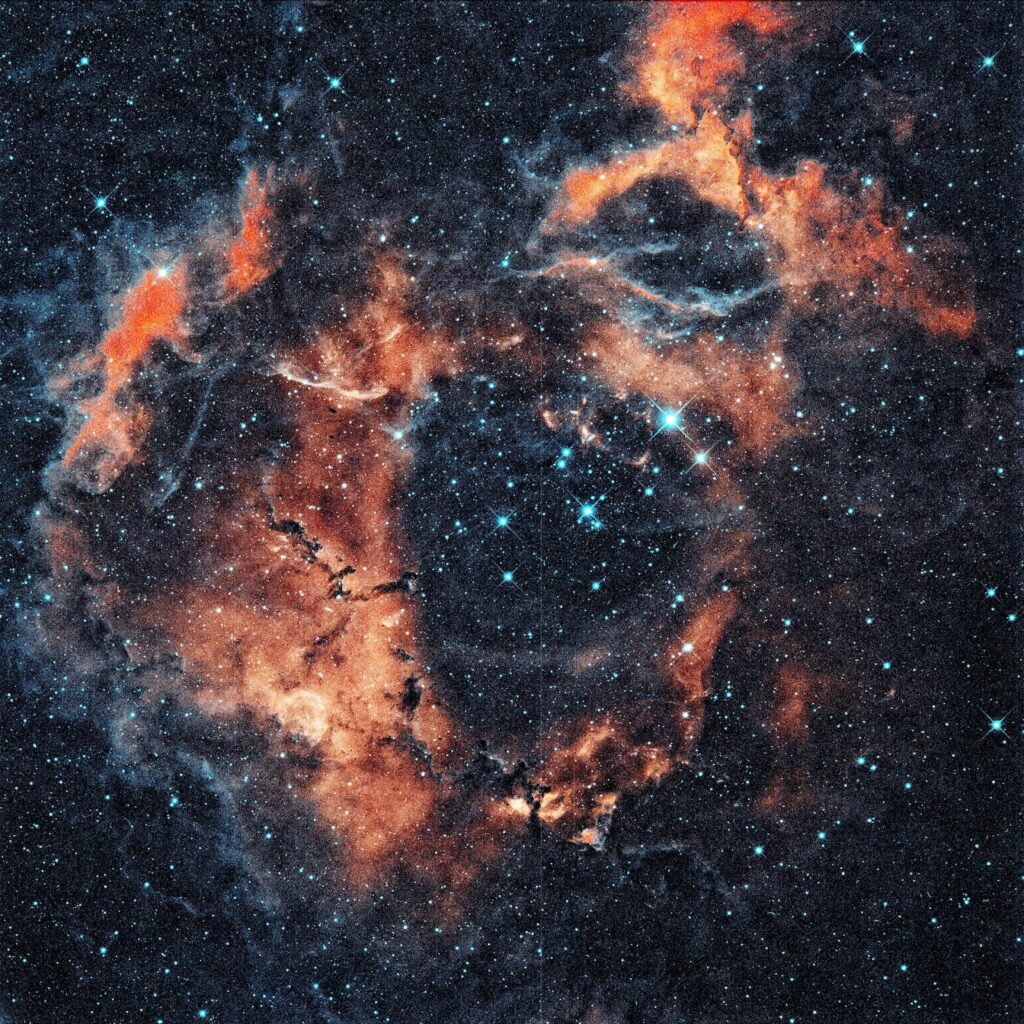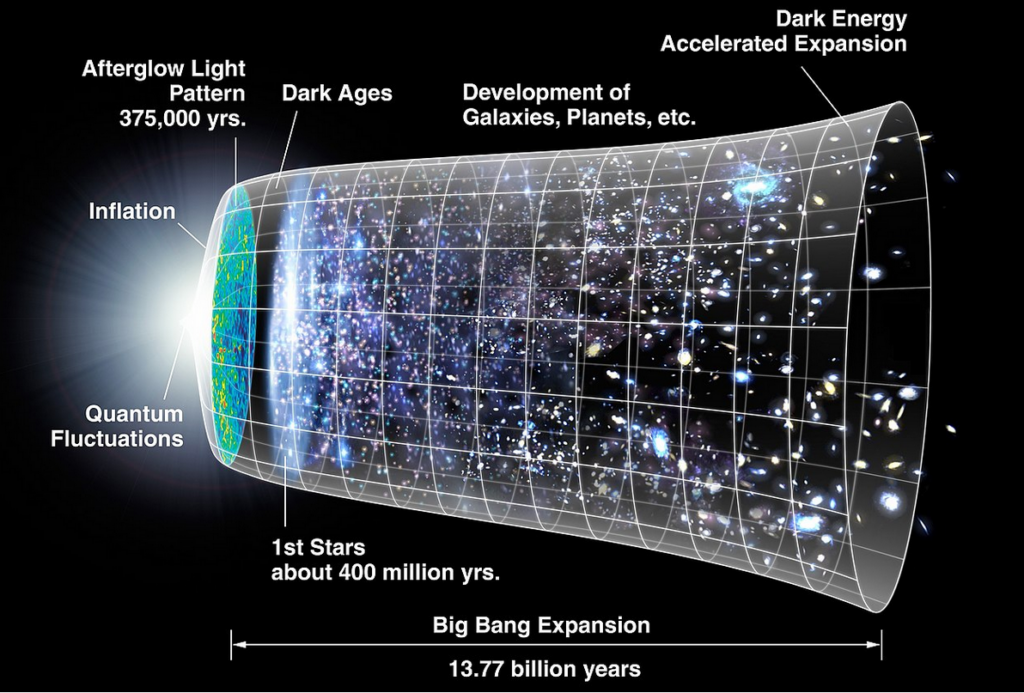A lot of questions surround the concept of the Big Bang, one of which is where did the Big Bang occur? This complex theory offers an insight into the possible origins of our universe which we will look at more closely in this article. We will also discuss if there is a known location for the start of the Big Bang event.
What Is the Big Bang?
The Big Bang event is a theory that exists in physics which describes a possible version of our universe expanding from an initial state of high density and temperature. The work of mathematicians and astronomers has combined for decades in trying to prove or disprove this theory based on our observable universe.

Outward Expansion of the Universe
Key to the idea of the Big Bang is an understanding that the universe is gradually expanding. In 1912 observations by Vesto M. Slipher indicated redshifting of the light from remote galaxies. This led to the theory that the galaxies may be receding from the earth or basically moving further away.
A decade later using Einstein’s field equations Alexander Friedmann was able to provide theoretical evidence that the universe was indeed expanding.
Big Bang Process
Cosmic Inflation
The theory suggests that at one point all the matter in the universe was held together in an area of infinite density and temperature. This was prior to the Bing Bang which in truth was more of an inflation outwards. Around 13.8 billion years ago it is thought that the universe began to expand outward from this dense mass.
The universe is thought to have expanded faster than the speed of light for a fraction of a second. This is a theoretical period known as cosmic inflation. Scientists aren’t sure what initiated this inflation or what may have powered it.

Cosmologists believe that inflation may explain a number of observable aspects of the universe as it is today. These include its flatness or lack of curvature.
Big Bang and Nucleosynthesis
When this cosmic inflation stopped, the energy that was driving it is thought to have transferred to matter and light. This new abundance of matter and light is what is described as the Big Bang. In the second following the Big Bang it is theorized that the universe consisted of an extremely hot primordial soup of light and particles. This hot soup is estimated to have been 18 billion degrees Fahrenheit or 10 billion degrees Celsius.
Within minutes, an era known as nucleosynthesis began which saw protons and neutrons colliding to produce the earliest elements. These would include:
- hydrogen
- helium
- lithium
- beryllium
After the first 5 minutes it is thought that most of today’s natural helium had been formed. The Initial expansion and cooling of the universe had also reached a point to where no further element formation took place.
The universe however was still too hot for the atomic nuclei of these elements to capture electrons which would be necessary for them to form complete atoms.
Recombination
It would take 380,000 years for the universe to cool enough for atomic nuclei to capture electrons. This is a period referred to by astronomers as the epoch of recombination. There would be two major effects of this, the cosmic fog of free electrons was cleared allowing the universe to become transparent. This would also allow light to travel freely over great distances.

The second effect was that the formation of these first atoms produced light energy. We can still detect the glow of the formation of these first atoms to this day. This glow is known as the cosmic microwave background.
The Universal Dark Ages
In human history we refer to dark ages as periods in which a nation sees no new advances. It is a period of little advancement in knowledge and perhaps even decline. Cosmically speaking the universe would enter a dark age after the cosmic microwave background was formed.
The hydrogen atoms would absorb the shorter wavelengths of the exiting light and as yet stars had not started to form. Over the next 200 million years our universe remained dark. It was simply a sea of hydrogen, helium and other trace elements in atomic form.
The First Stars
The gases of our universe were not spread out evenly and there would be so called clumps that had denser clouds of gas. As the clumps grew they would become denser and more compact. At the center of these dense clumps temperatures became hotter eventually leading to nuclear fusion.
This nuclear fusion essentially lit the stars which would have roughly been 30 – 300 times the size of our own star the sun. It would take several million years but eventually these new stars would collect together into galaxies.
Reionization Period
In the early lives of stars their light still could not travel far, relatively speaking, due to it being scattered by the dense gas clouds that surrounded them. However over time the ultraviolet light emitted by the stars would break down these clouds.
The UV light did this by ionization of the gas atoms breaking them into their constituent electrons and protons. With the progression this reionization allowed starlight to travel further and unobstructed. Within the first billion years the light given off by stars had transformed nearly all of the gas making the universe transparent and as we see it today.
Is the Universe Expanding in Space or Expanding Space?
This is the big distinction that can often cause confusion with regards to the expansion of our universe. Some may think of the results of the Big Bang resulting in the universe expanding into an existing empty space.
Experts however theorize that not only did the Big Bang give birth to matter but it also birthed space itself. Essentially the universe is not extending into space because it is considered to be space itself.
The universe then theoretically is space so it expands in size but not into any finite empty space it is looking to fill.
Where Did the Big Bang Occur?
So we come to the big question: is there a place in our universe that can be called the point at which the Big Bang occurred? In truth we can’t point to a galaxy, solar system, star or planet that is close to an origin point for the Big Bang.
If you consider that the Big Bang created space as we know it then every point within this space is where the Big Bang occurred. It happened everywhere at once and everything that was small grew big with expansion.
Final Thoughts
Space is a mysterious place and for all that we know there is much we are still learning of it. Prevailing thinking suggests a Big Bang event initiated the expansion of our universe and the creation of space itself. As such with the Big Bang happening everywhere in the universe at once even after the expansion the location of the Big Bang exists everywhere.
